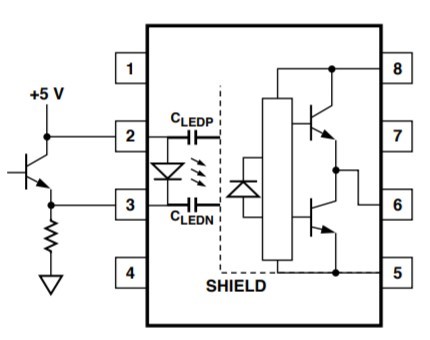Hi,
In UCC23513 datasheet, a suggestion interlock circuit is proposed. But I am curious about the CMR problem especially when LED is off. Always we shunt a transistor with LED when LED is off which is good for CMR. But for the Interlock circuit, there is no shunt path for LED off. Will I face the CMR problem with interlock circuit?




